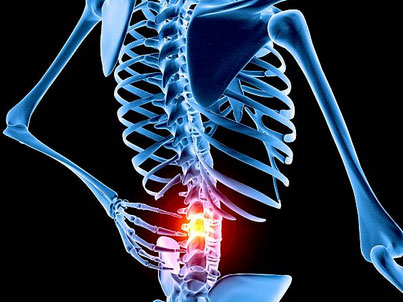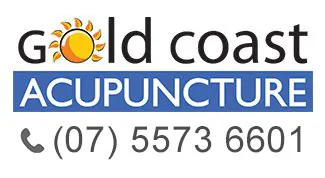Low Back Pain Acupuncture Gold Coast
The lower back plays a crucial role in bearing the weight of the upper body and enabling regular movements such as bending and twisting. It is the muscles in the lower back that allow for hip flexion and rotation during walking, while also providing support to the spine. Additionally, the nerves in the lower back are responsible for supplying sensation and powering the muscles in the pelvis, legs, and feet.
Acute low back pain commonly originates from damage to the muscles, ligaments, joints, or discs. In addition, the body naturally triggers an inflammatory healing process as a response to injury. Despite its seemingly insignificant nature, inflammation can lead to intense pain.
Many discs, muscles, ligaments, and spinal structures share the same nerve supply, making it challenging for the brain to accurately identify the source of pain. In certain cases, a degenerated or torn lumbar disc can produce similar sensations as a strained muscle, leading to inflammation and painful muscle contractions in the same region. However, muscles and ligaments have a faster healing process compared to torn discs, which may or may not heal entirely. The duration of the pain aids in determining the underlying cause.

Low Back Pain Symptoms
Symptoms of pain can vary depending on the underlying cause. Here are some examples:
– Dull or achy pain that is localized to the lower back.
– Pain that feels like stinging or burning, starting from the lower back and extending towards the back of the thighs. It may also reach the lower legs or feet and be accompanied by numbness or tingling (known as sciatica).
– Muscle spasms and tightness in the lower back, pelvis, and hips.
– Pain that worsens after prolonged periods of sitting or standing.
– Difficulty in maintaining an upright posture, walking, or transitioning from standing to sitting.
How does Acupuncture relieve Lower back pain?
Acupuncture is a form of alternative medicine in which thin needles are inserted into the body. It is a key component of traditional Chinese medicine (TCM).
Acupuncture may relieve (both sensory and affective) inflammatory pain. This occurs through activation of a variety of bioactive chemicals through peripheral, spinal, and supraspinal mechanisms.
Zhang et al 2014 – Mechanisms of acupuncture in persistent pain
The staff at our Acupuncture Gold Coast clinic are trained and qualified to provide you with the highest standards of practice and treatment.
Low Back Pain Acupuncture Research
[Chronic – positive effect; acute – potential positive effect]
For low back pain, acupuncture was rated as ‘effective (possibly}’ in the Australian DVA review (2010} and ‘unclear’ in the USVA Evidence map of acupuncture (2014) (5, 6). The main reason given for the ‘unclear’ rating in the USVA Evidence map was that ‘sham acupuncture controlled trials tended towards statistically nonsignificant results’ and a Cochrane systematic review in 2005 which drew no firm conclusions on the effectiveness of acupuncture for acute low back pain (6). The problems associated with the interpretation of the effects of sham acupuncture have already been discussed. When reviews separate the evidence on chronic low back pain from acute low back pain, as was done in the recent review by the US Agency for Healthcare Research and Quality, it was found that there is moderate quality evidence for the effectiveness of acupuncture in chronic low back pain for both pain intensity and function, but only low quality evidence for pain intensity and function in acute low back pain (45).
In a systematic review of 32 randomised controlled trials for acupuncture treatment of chronic non-specific low back pain, acupuncture was superior (both statistically and clinically significant) to sham acupuncture in pain reduction and improved function immediately after treatment (46). Acupuncture was equivalent but not superior to usual care in pain and function, but acupuncture plus usual care was superior to usual care alone (46). The reviewers rated the evidence level of their review as Level of Evidence I (46). A systematic review of 11 randomised controlled trials on acute low back pain, acupuncture was superior to NSAIDS for improving symptoms (small effect), and superior to sham for pain but not function (47). A narrative review of non-invasive and alternative treatments for chronic low back pain rated the evidence for the effectiveness of acupuncture as high and for acupressure as moderate (48).
A review of 16 systematic reviews found that acupuncture alone, or when added to usual care, provided short-term improvement in pain and function for chronic low back pain (medium to large clinical effects) and hence ‘should be advocated in routine clinical practice’ (49). For acute low back pain, the reviewers could not make firm conclusions about the effectiveness of acupuncture due the inclusion of only two systematic reviews (49). Two studies found that acupuncture is likely to be cost-effective for low back pain or chronic non-specific low back pain,respectively (50, 51).
Acupuncture Gold Coast Location
The Gold Coast Acupuncture Clinic is located in the Coomera Shopping Village at 13/31 Dreamworld Parkway, Coomera opposite the Boathouse Tavern. This is a great Location for the surrounding suburbs of Coomera, Upper Coomera, Oxenford, Helensvale, Pimpama, Ormeau, Willowvale, Tamborine Mountain and Hope Island.
Book your appointment
Acupuncture is available at our Coomera Clinic. If it is your first visit please make sure you arrive 5 minutes early to fill out paperwork. All our therapists are qualified and trained professionals.
Call our Clinic
You may call us at our Coomera clinic directly.
Phone: 5573 6601
Book Online 24/7
You may book an appointment online by clicking here
References
5. Biotext. Alternative therapies and Department of Veterans’ Affairs Gold and White Card arrangements. In: Australian Government Department of Veterans’ Affairs, editor: Australian Government Department of Veterans’ Affairs; 2010.
6. Hempel S, Taylor SL, Solloway MR, Miake-Lye IM, Beroes JM, Shanman R, et al. VA Evidence-based Synthesis Program Reports. Evidence Map of Acupuncture. Washington (DC): Department of Veterans Affairs; 2014.
45. Chou R, Deyo R, Friedly J, Skelly A, Hashimoto R, Weimer M, et al. AHRQ Comparative Effectiveness Reviews. Noninvasive Treatments for Low Back Pain. Rockville (MD): Agency for Healthcare Research and Quality (US); 2016.
46. Lam M, Galvin R, Curry P. Effectiveness of acupuncture for nonspecific chronic low back pain: a systematic review and meta-analysis. Spine (Phila Pa 1976). 2013 Nov 15;38(24):2124-38.
47. Lee JH, Choi TY, Lee MS, Lee H, Shin BC, Lee H. Acupuncture for acute low back pain: a systematic review. Clin J Pain. 2013 Feb;29(2):172-85.
48. Wellington J. Noninvasive and alternative management of chronic low back pain (efficacy and outcomes). Neuromodulation. 2014 Oct;17 Suppl 2:24-30.
49. Liu L, Skinner M, McDonough S, Mabire L, Baxter GD. Acupuncture for low back pain: an overview of systematic reviews. Evid Based Complement Alternat Med. 2015;2015:328196.
50. Andronis L, Kinghorn P, Qiao S, Whitehurst DG, Durrell S, McLeod H. Cost-Effectiveness of Non-Invasive and Non-Pharmacological Interventions for Low Back Pain: a Systematic Literature Review. Appl Health Econ Health Policy. 2016 Aug 22.
51. Taylor P, Pezzullo L, Grant SJ, Bensoussan A. Cost-effectiveness


